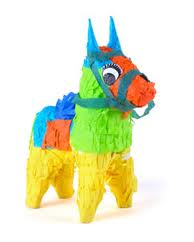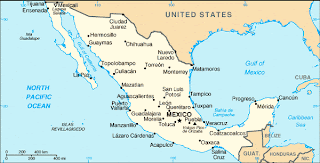 |
| GO GIANTS!! |
 |
| My husband with some "dead" lady |
Today we did something really fun and totally different. November 1st and 2nd is when the Mexican culture celebrates Dia de los Muertos, a celebration of life and death when the spirit of the dearly departed return to Earth for a family fiesta. The East Palo Alto Community Church was having a festival to celebrate the day so off we went for a field trip! What fun! There was lots of food- pupusas (stuffed pockets with meat and melted cheese), tacos, pozole (spicy soup with hominy and lots of toppings), nachos, tamales, cupcakes!! Yum. There were lots of people with their faces painted up as skulls and crafts for the kids to make - sugar skulls that they could decorate and drawing pages. Mariachi bands and singers, an Aztec dance troupe and folk dancers (we left before them). It was a great introduction for us to learn about a wonderful tradition. Here are a few of the customs we learned about:
 Ofrendas - While some people visit the graves of loved ones and celebrate there, others build an ofrenda, or altar, in their homes.
Ofrendas - While some people visit the graves of loved ones and celebrate there, others build an ofrenda, or altar, in their homes.
 |
| Pan de Muertos (middle) and some other sweets |
It would have the photo of the one being honored and prayer candles in purple for pain, white for hope and pink for celebration. There should be pan de muertos (bread of the dead), which is a sweet bread baked in round loaves to symbolize the circle of life and decorated with bone shapes. Sugar skulls, tissue paper decorations called papel picado, copal (incense to clear the path for the spirit to return), a glass of water and a bottle of beer or tequila would also be featured.

Calaveras- These are skulls and skeletons posed or dressed whimsically and used in artwork, toys, jewelry and many other forms.
Cempazuchitl- Also known as "the flower with 400 lives", marigolds were thought by the Aztecs to symbolize death. It is believed that the scent of the petals forms a welcome path for the spirits to return to the altars or graves.
Sugar Skulls- These are skulls molded from a sugar paste, then decorated with icing, glitter and foil. Often placed on altars, the sugar represents the sweetness of life and the skull represents the sadness of death.

We came home from the festival having had more fun than we expected. I was especially touched by the altars. I had been reading up on Dia de los Muertos and so yesterday (Nov. 2), I took the kids to the cemetary to visit the grave of my Grandmother. We cleaned her gravestone and put some flowers and candy on it. But there were so many other people who had done huge flower arrangements and really put us to shame. It made me sad that I don't visit more often and I was so moved by the altars that when we came home we made a little one that we'll keep up for a day or so. It honors the parents and older sister of my husband and 3 of my grandparents who have died. It doesn't have all the components of a traditional ofrenda but it has a few. I hope they can all join us tonite for a little fiesta :)
Our ofrenda to honor those we have loved and lost

















